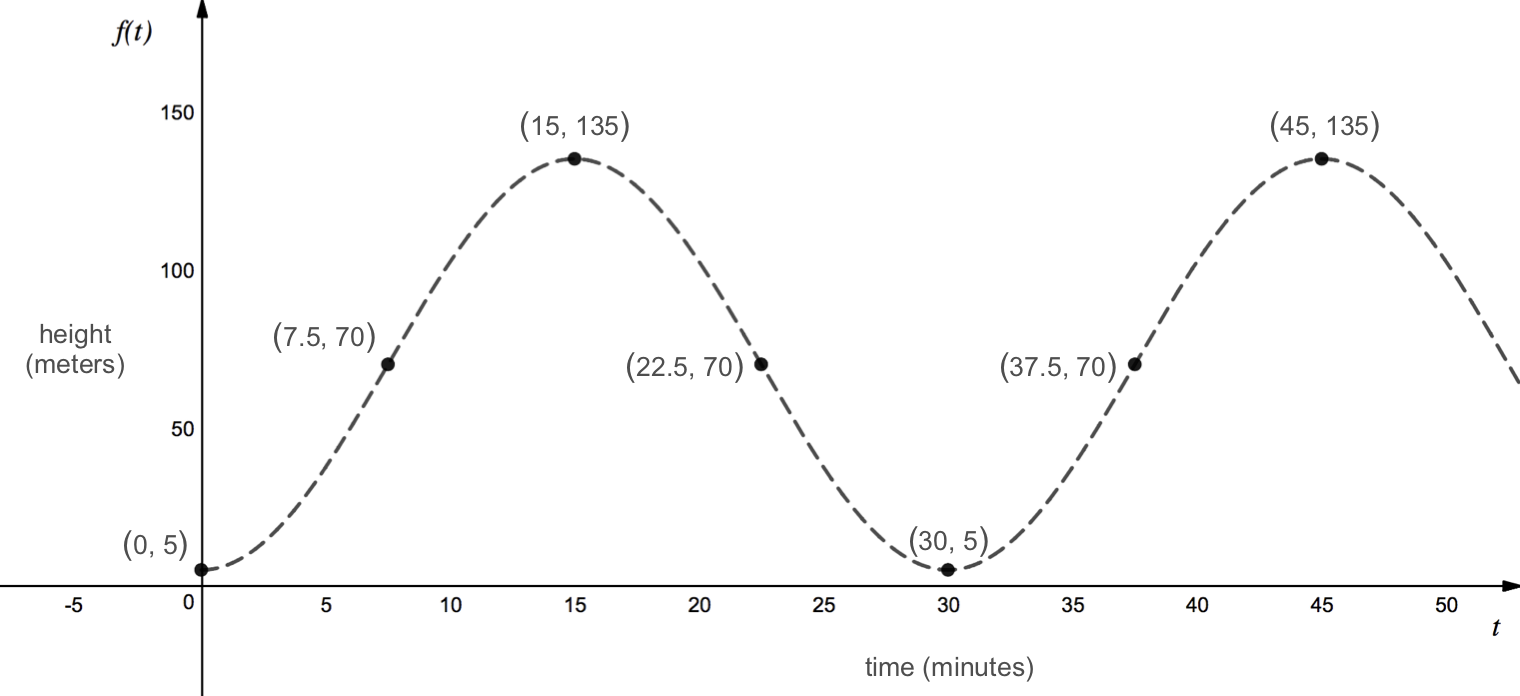Example74
The London Eye is a huge Ferris wheel in London, England. At time \(t=0\text{,}\) an individual boards the Ferris wheel. Let \(h = f(t) \) be the height of the individual above ground (in meters) after \(t\) minutes. Given the graph of \(h = f(t) \) below, find an equation for \(h = f(t)\text{.}\)

First, we need to determine what sinusoidal function to use. Since the graph of the function crosses the \(y\)-axis at its minimum value, then we should use a generalized cosine equation, so our function will be of the form \(f(t) = A\cos(B(t-h))+k \text{.}\) Since the function crosses \(y\)-axis at its minimum value, then \(A\) will be negative. Moreover, since there is no horizontal shift, then \(h = 0\text{.}\) To find \(A, B\text{,}\) and \(k\text{,}\) we need to find the amplitude, period, and midline.
As shown on the graph, the period of the function is 30 minutes. Therefore, the \(B\) value of the function is
Again, we assume that \(B\) is positive, so
The maximum value of the function is 135 meters and the minimum value is 5 meters. The midline is halfway in between these two values and can be found by averaging them:
Thus, the midline of the function is the line \(y=70\) meters, and
The amplitude of the function is the distance between the maximum value and the midline which is \(135-70=65\) meters. Therefore,
Putting this all together, the height of the individual \(t\) minutes after getting on the ride is given by
To check our solution, we can use a graphing calculator to graph the function we came up with and confirm that it matches the graph shown above.
